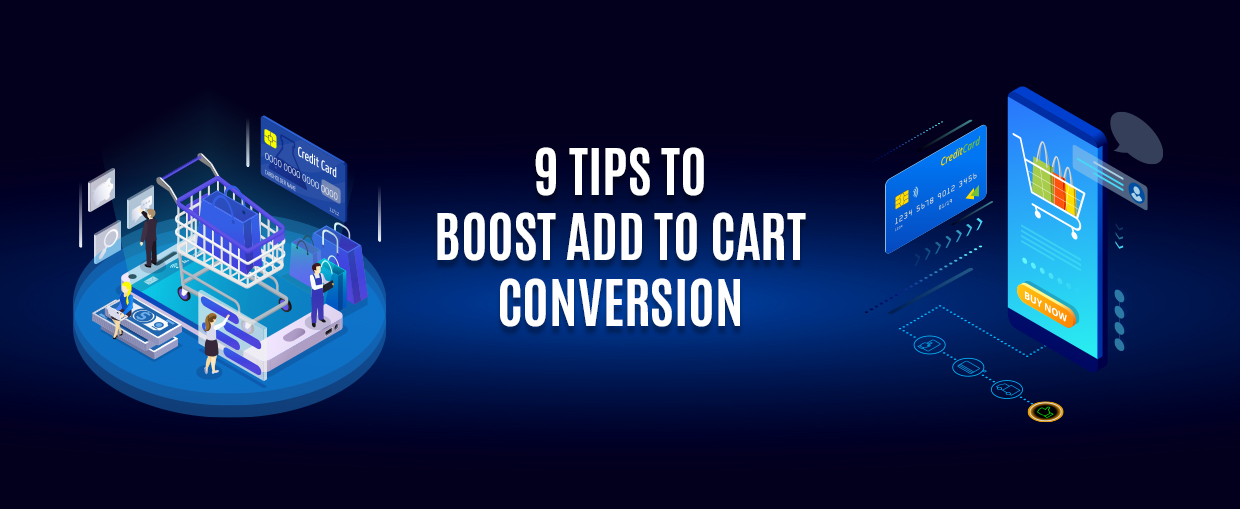English is the most popular language studied globally, yet companies that primarily use English still create bilingual and multilingual websites. The reason for this is globalization. According to a language learning platform, only 15% of the world’s population speaks English, indicating a significant untapped market.
This article aims to guide you through the process of creating a multilingual website using a web content management system (WCMS) and help you leverage its potential in the rapidly expanding market.
Multilingual Website
A multilingual website provides its content in multiple languages, making it accessible to a larger number of people. This expands the brand’s reach by appealing to a broader audience and targeting potential customers in their native language.
Multilingual Website: Advantages
If you are looking to venture into new markets or if your target audience speaks multiple languages, it may be necessary to consider creating a multilingual website. Additionally, developing a website in various languages can help establish your brand’s authority over your competitors. If you are unsure about this decision, here are some reasons why having a multilingual website is crucial.
1. Helps in Expanding Your Customer Base
Incorporating multiple languages into your website can help you expand your customer base, even within the same country. This is supported by a global survey conducted by CSA, which found that 66% of consumers are willing to pay more for a localized product, regardless of whether the business is local or global.
2. Enhanced Engagement
Having a multilingual website can enhance engagement with potential customers who do not speak the same language as you. Visitors who speak multiple languages are often considered “high-intent prospects,” but may be hesitant to communicate their thoughts if language is a barrier. Providing language options allows them to express their concerns, ask questions, and make purchases with confidence.
3. Meets International SEO Standards
To meet global SEO standards for your website, incorporating multiple languages is a highly effective approach. Not only does this allow you to reach various target audiences around the world, but it also simplifies your brand messaging for a wider range of users. Having a multilingual website can enhance your page rankings and boost your visibility on search engines.
4. Helps in Enhancing Word of Mouth Marketing
If your potential customers receive personalized support in their preferred language throughout their entire journey, they are likely to feel content and pleased. By providing a diverse and multilingual brand experience, you can enhance word-of-mouth marketing and attract attention to your brand.
5. Increases Sales
It’s evident that diversity, empathy, and inclusion play crucial roles in the success of a brand. By creating a welcoming environment for everyone, not just customers, you can effectively communicate your brand’s values and generate significant sales growth.
6. Familiarization
When you give local users the option to choose their preferred language, you capture their attention right from the beginning. Incorporating multiple languages can differentiate your brand from others by tailoring your content to your audience’s needs and preferences, making them feel at ease and comfortable.
7. Helps You in Establishing a Competitive Benchmark
By implementing a multilingual website and optimizing it for search engines, you can appear on local search engines, reach new markets, and grow your business. Having content available in multiple languages can give you a competitive advantage over your competitors who only focus on their products and neglect the needs of their customers.
Multilingual Website: Challenges
While creating a multilingual website can offer numerous advantages, it’s important to note that, like anything valuable, it comes with its own set of difficulties.
1. Pricey & Time Consuming
Translating a website into another language can be a costly and time-consuming process, particularly when there is a significant amount of content. It requires finding a qualified translator who is fluent in the target language and can accurately convey the context and meaning of the website’s content.
2. Inconsistency and maintenance problems:
It is crucial to maintain consistency in information, design, and layout across all versions of a multilingual website. This can present maintenance challenges, as any updates or changes to the website must be reflected in all language versions to ensure consistency.
3. Localization Errors
Localization is a critical aspect of multilingual website creation that goes beyond literal translation. It involves adapting the website to capture the essence of the language, considering cultural, linguistic, and regional differences. This may include reversing the layout from Left-to-Right to Right-to-Left when translating into Arabic, as well as considering factors such as images, currency, measuring units, and date formats.
4. Low search engine visibility
Optimizing content for multilingual websites can be challenging when it comes to SEO, as it requires optimizing for different languages and locations. To ensure high visibility in SERPs, it is necessary to conduct thorough keyword research and ensure that the translated content is accurately indexed and localized to match users’ queries.
5. Poor User Experience
Creating a seamless user experience on a multilingual website requires careful planning to ensure that users can easily navigate through the site. Without proper planning, the user experience may be subpar. An intuitive and user-friendly interface, clear language selection options, fast loading times, and mobile-friendliness are essential components of a successful multilingual website.
Steps to Build a Multilingual Website
This guide will assist you in getting started with tapping into the multilingual market. Are you all ready to begin?
1. Establish Your Expansion Goals
The first step in creating a multilingual website is to establish your expansion goals. This involves determining which languages you want to add to your website based on your audience, budget, and resources. It may be difficult to find resources with a strong command of your desired language, especially in a predominantly English-speaking world.
To ensure consistent updates to your website, it’s important to carefully consider the following questions:
- Do you want to target a specific country or translate your website without specific regional targeting?
- Is there a market for your products and can you compete on price, quality, and brand name?
- How many languages can you afford to budget for?
2. Determine Your Domain Strategy
There are two ways to create a multilingual website: using a subdomain approach or a separate domain approach. The subdomain approach involves linking pages in other languages to a single domain, which is more cost-effective, but it can result in broken links. On the other hand, the separate domain approach is quicker to set up and has fewer bugs, but it can be more expensive. Both these approaches have their own pros and cons.
3. Select an Apt Software
After deciding on the website’s language, the next step is to select a content management system (CMS) to help create and manage the website’s digital content.
WordPress and Joomla are popular self-hosted, open-source CMSs with over a decade of existence. WordPress has a vast support community, great extensibility, and lower development costs. Joomla has more advanced user management and better flexibility for non-standard content types. However, Joomla comes with built-in multilingual options, whereas WordPress requires a plugin. The chosen CMS should align with the multilingual needs and budget of the website.
4. Select a Plugin
Step 4 is to select a plugin if your chosen CMS requires it for multilingual content. There are several website translation tools available, including Weglot, GlobalLink, and Smartling, that can help with automatic content translation. Some of these tools also provide options for manual translation. However, it’s important to ensure that the selected CMS tool is compatible with your website’s WCMS.
5. Translate
Some people think that installing a plugin for a multilingual website will automatically translate all content, but this is not entirely true. While these tools can help translate website content, they can only provide literal translations and may miss nuances or context. It’s important to not rely solely on automatic translation tools and services. Having your content reviewed or translated by a real person is crucial. Although hiring a group of freelance translators may not be easy, it’s the best approach. Human translators can look at language in a contextual and emotional way, resulting in a more accurate translation of your text.
6. Determine a Place for the Language Selection Menu
When building a multilingual website, it is crucial to prioritize the site’s functionality and overall user experience (UX) in all decision-making processes. One of the significant responsibilities is to determine how users will be able to select their preferred language on the site. The most intelligent and effective way to offer language selection options is through a drop-down menu placed in a convenient location. Typically, such menus are positioned in the top-right corner of the homepage, which is universally recognized as the most visible and obvious location. Alternatively, depending on your design preferences and website layout, you may also opt to include a list of languages in the header, footer, or sidebar.
7. Designing the Language Selection Menu
Once you have decided where to place the language selection menu on your website, you can start designing its appearance. The first step is to determine which languages you will offer to your users, and then decide how to list them on the menu and in what order. Generally, there are two approaches companies take in designing the menu: using flags or text. However, we recommend using a text-based option as flags represent countries, not languages.
It is possible for the same language to be spoken in different countries, such as French in Canada or Spanish in Mexico. Therefore, using flags to indicate languages on a language selection menu can be confusing for some users.
8. Optimize
When it comes to SEO for multilingual and bilingual websites, it is essential to pay extra attention to their optimization. To ensure maximum traffic from search engines, it is important to implement a suitable structure, language tags, and schema hacks for multiple locations. These measures will help to optimize the website for SEO and increase its visibility in search engine results.
9. Remember to Check Your Typography
When designing a website that will be viewed in multiple languages, typography is an important factor that is often overlooked. This includes choosing a font and layout that is readable for all languages. Using Unicode is a good way to ensure that your website can display characters from over 90 languages. It’s also important to consider the alignment of your text – left alignment is standard, but it may not work well for languages that read from right to left. You may need to adjust the page layout to ensure that all languages are readable.
10. Localizing
A multilingual website is more than just translating words accurately. Many businesses today rely on ecommerce web development to reach their customers and increase sales through online platforms. When creating a multilingual ecommerce website, it is essential to consider currency switches and marketing sensitivities in different countries.
Localizing a website also involves translating a language accurately as it is spoken in various regions. Even if a language is spoken globally, different versions are available based on location.
A warm welcome on your website is crucial for users, or they will quickly leave. Therefore, ensuring accurate language translations and localizing for each country can reduce bounce rates and improve SEO.
Examples of Multilingual Websites
Here are some examples of successful multilingual websites:
Apple: Its website is available in multiple languages and allows for location-specific content by selecting language and region. Siri, Apple’s virtual assistant, supports 21 languages to cater to the diverse needs of its global customer base. Apple takes its multi-language support a step further by including different variants of English, French, and Mandarin.
Nike: The website allows users to select their preferred language by location, with languages such as Portuguese, Spanish, French, and Italian.
Ikea: The website supports languages like Japanese, Chinese, Russian, and Italian, and automatically translates the entire site once a language is selected.
Conclusion
Creating a successful multilingual website can be challenging and requires careful attention to detail. However, with dedication, patience, and persistence, the effort will pay off in providing users with an exceptional multilingual experience. To reach a global audience, it’s crucial to optimize your content using SEO software and take advantage of the untapped market.
If you’re seeking a proficient custom website development company for tailored website development services, coupled with top-notch digital marketing services, to collaborate with, reach out to us! Our experts are here to help you!









